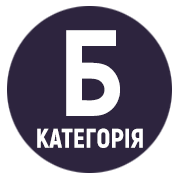STUDY OF THE COMORBIDITY OF POST-TRAUMATIC STRESS DISORDER AND BLAST-RELATED INJURIES AMONG MILITARY PERSONNEL (BASED ON THE EXPERIENCE OF THE RUSSO-UKRAINIAN WAR)
DOI:
https://doi.org/10.32782/3041-2005/2025-3.6Keywords:
post-traumatic stress disorder, blast-related injury, military personnel, cognitive-behavioral therapy, EMDR, comorbidity, rehabilitationAbstract
The article presents the results of a study on the comorbidity of post-traumatic stress disorder (PTSD) and blastrelated injuries (BRI) among Ukrainian servicemen involved in the Russo-Ukrainian war. The combined effect of neurological damage and psychological trauma significantly increases the risk of PTSD and complicates recovery. The aim was to identify the relationship between the severity and type of blast injury and PTSD manifestations, and to assess the effectiveness of therapeutic approaches. The study included 100 servicemen with concussions, shrapnel wounds, and combined trauma. PTSD was diagnosed using the PCL-5 questionnaire and CAPS-5 clinical interview. Statistical analysis revealed a direct correlation between injury severity and PTSD symptoms (r = 0.77 for PCL-5; r = 0.69 for CAPS-5; p < 0.001). Combined injuries showed the highest prevalence of PTSD. The most effective treatments were cognitive-behavioral therapy and EMDR, reducing symptoms by 40–45 % and achieving remission in over 70 % of cases. Pharmacotherapy had an auxiliary role, providing moderate improvement. The findings highlight the need for integrated rehabilitation programs that combine psychotherapy, pharmacological support, neurorehabilitation, and long-term monitoring tailored to the needs of combat veterans.
References
Аймедов К. В., Асєєва Ю. О., Волощук А. Е., Толмачов О. А. Сучасна діагностична концепція посттравматичного стресового розладу. Архів психіатрії. 2016. Т. 22, № 2. С. 128–129.
Асєєва Ю. О., Аймедов К. В., Яцишина А. М. Вплив воєнних дій на розвиток ПТСР у військовослужбовців. Габітус. 2024. Вип. 63. С. 137–141. DOI: https://doi.org/10.32782/2663-5208.2024.63.23
Зайцев В. В. Психологічна травма та механізми формування посттравматичного синдрому у військовослужбовців. Психологічний журнал. 2021. № 1. С. 33–40.
Козлова І. В. Психологічні наслідки бойового стресу: діагностика та шляхи подолання. Соціальна психологія. 2020. № 4. С. 42–51.
Коляда О. І. Посттравматичний стресовий розлад: методологія дослідження, особливості перебігу у військовослужбовців. Вісник НУОУ. Серія: Психологія. 2019. № 3. С. 80–88.
Пов’якель Н. М. Посттравматичний стресовий розлад: сучасне розуміння, клініка, підходи до психосоціальної реабілітації. Психологія і суспільство. 2020. № 3. С. 50–59.
Соловей О. М. Психологічні чинники формування ПТСР у військових із бойовим досвідом. Збірник наукових праць ХНПУ ім. Г. С. Сковороди. Серія: Психологія. 2021. № 62. С. 117–124.
Хмелевська О. В. Психологічна підтримка військовослужбовців із симптомами ПТСР. Військова психологія: теорія і практика. 2020. № 1(21). С. 36–44.
Смашна О. Є. Визначення особливостей психопатологічної структури ПТСР, коморбідного з черепно-мозковою травмою, за допомогою CAPS-5. Здобутки клінічної і експериментальної медицини. 2021. № 2. С. 151–160. DOI: https://doi.org/10.11603/1811-2471.2021.v.i2.12219
Фітькало О. С., Негрич Т. І. Особливості діагностики ПТСР у пацієнтів з контузією, ускладненою адиктивною та іншою коморбідною психопатологією. Міжнародний неврологічний журнал. 2024. Т. 20, № 6. С. 33–36.
Hoge C. W., McGurk D., Thomas J. L., Cox A. L., Engel C. C., Castro C. A. Mild traumatic brain injury in U.S. soldiers returning from Iraq. New England Journal of Medicine. 2008. Vol. 358, No. 5. P. 453–463. DOI: https://doi.org/10.1056/NEJMoa072972
Vasterling J. J., Verfaellie M., Sullivan K. D. Mild traumatic brain injury and posttraumatic stress disorder in returning veterans: perspectives from cognitive neuroscience. Clinical Psychology Review. 2009. Vol. 29, No. 8. P. 674–684. DOI: https://doi.org/10.1016/j.cpr.2009.08.004
Borinuoluwa R., Ahmed Z. Does Blast Mild Traumatic Brain Injury Have an Impact on PTSD Severity? Trauma Care. 2023. Vol. 3, No. 1. P. 9–21. DOI: https://doi.org/10.3390/traumacare3010002
Bradley R., Greene J., Russ E., Dutra L., Westen D. A multidimensional meta-analysis of psychotherapy for PTSD. American Journal of Psychiatry. 2005. Vol. 162, No. 2. P. 214–227. DOI: https://doi.org/10.1176/appi.ajp.162.2.214
Reisman M. PTSD Treatment for Veterans: What’s Working, What’s New, and What’s Next. Pharmacy and Therapeutics. 2016. Vol. 41, No. 10. P. 623–634. PMID: 27757001.
Матяш М. М. Мультимодальний підхід у лікуванні віддалених наслідків мінно-вибухової закритої черепно-мозкової травми та ПТСР в учасників АТО. Нейрохірургія і неврологія (Health-UA). 2018. URL: https://health-ua.com/article/33766
American Psychiatric Association. Diagnostic and Statistical Manual of Mental Disorders. 5th ed. Arlington, VA : American Psychiatric Publishing, 2013. 947 p.
American Psychiatric Association. DSM-5-TR: Text Revision. Washington, DC : American Psychiatric Association, 2022. 1150 p.
World Health Organization. ICD-11: International Classification of Diseases. 11th Revision. Geneva : WHO, 2019.
U.S. Department of Veterans Affairs. National Center for PTSD resources. URL: https://www.ptsd.va.gov
NATO Science & Technology Organization. Psychological health and resilience in military operations. NATO STO Technical Report. 2020.
Yehuda R., Hoge C. W., McFarlane A. C., Vermetten E., Lanius R. A., Nievergelt C. M., et al. Post-traumatic stress disorder. Nature Reviews Disease Primers. 2015. Vol. 1. Article 15057. DOI: https://doi.org/10.1038/nrdp.2015.57.
Центр громадського здоров’я України. Посттравматичний стресовий розлад: інформаційні матеріали. Київ : ЦГЗ, 2022.





